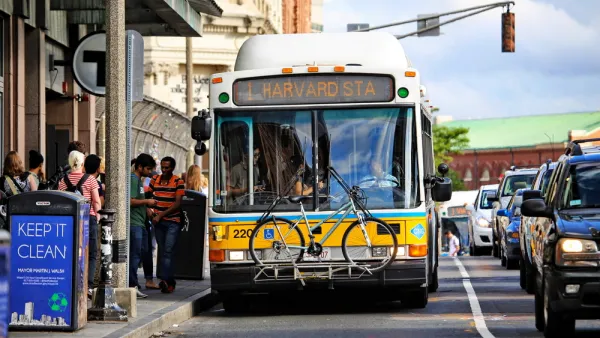The diffuse structure of suburbs makes it more efficient, according to this Brooking Institution post, to invest in individuals rather than places to fight poverty.
Natalie Holmes and Alan Berube explains some of the implications of a shifting geography of poverty—from urban to suburban—and its connections to the federal Earned Income Tax Credit (EITC). Now that the geography of poverty is shifting, according to the article, so too will the role of the EITC. Moreover, the article also explains "how expanding participation in the program and paying the credit differently could enhance its effectiveness as a local economic stabilizer."
The article establishes the historical context for the War on Poverty, dating back to 1964, when poverty was mostly urban and rural. Poverty in suburban settings, however, will make place-based initiatives harder to achieve. Therefore, direct investments in low-income individuals, such as the EITC, will become more important.
That's not to say that the EITC fails to benefit a broader definition of community, according to the post. California State University researchers cited in the article found evidence that "the credit creates local economic impacts equivalent to at least twice the amount of EITC dollars received" in California counties. Other examples of the community and multi-generational benefits of the EITC are included in the article.
The article concludes with additional recommendations for how to maximize the EITC as an anti-poverty tool in suburban settings.
FULL STORY: The Earned Income Tax Credit and Community Economic Stability

Analysis: Cybertruck Fatality Rate Far Exceeds That of Ford Pinto
The Tesla Cybertruck was recalled seven times last year.

National Parks Layoffs Will Cause Communities to Lose Billions
Thousands of essential park workers were laid off this week, just before the busy spring break season.

Retro-silient?: America’s First “Eco-burb,” The Woodlands Turns 50
A master-planned community north of Houston offers lessons on green infrastructure and resilient design, but falls short of its founder’s lofty affordability and walkability goals.

Test News Post 1
This is a summary

Analysis: Cybertruck Fatality Rate Far Exceeds That of Ford Pinto
The Tesla Cybertruck was recalled seven times last year.

Test News Headline 46
Test for the image on the front page.
Urban Design for Planners 1: Software Tools
This six-course series explores essential urban design concepts using open source software and equips planners with the tools they need to participate fully in the urban design process.
Planning for Universal Design
Learn the tools for implementing Universal Design in planning regulations.
EMC Planning Group, Inc.
Planetizen
Planetizen
Mpact (formerly Rail~Volution)
Great Falls Development Authority, Inc.
HUDs Office of Policy Development and Research
NYU Wagner Graduate School of Public Service




























